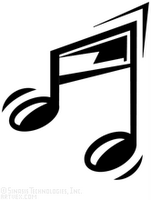
Although we often use songs to enhance learning tasks, we don't always think of music as a valuable tool for changing the alertness levels of our students. Read what this educator has to say on the subject.
Raleigh Philp, M.Ed. MAT, is a trainer and educational consultant specializing in brain-compatible approaches to learning. He is a former elementary and secondary teacher, a Pepperdine University professor, and a consultant for the California State Department of Education.
When I do my workshops, one thing I try to get across is that kids can listen only for a short time -- probably fifteen minutes max, maybe twenty. And you've got to find innovative ways to change the psychological state of your learners about every twenty minutes: Get them up on their feet, change the environment using music, have them interact with each other.
I encourage teachers with a variety of strategies. For instance, how can you use music effectively in the class in order to make it an emotionally welcome place? A lot of teachers use music, but the nuances of how to use it are really important. I see more teachers saying, "I can learn to control the physiological state of my learners much more by using music at the right time."
So, for instance, maybe you should play something calming when they come into the classroom, like maybe classical music?
That's the perception most people have, that you should have music playing when kids come in. But you would also want to have playlists for other kinds of music, too. When kids come in to the class, you probably want to use music with an upbeat to it, eighty beats per minute or something. Other times, you'd want to use music in transition, between activities, or when you're writing in journals, maybe fifty to sixty BPM.
I'm a fan of public radio, and I'm amazed at how well they can integrate little pieces of music. So I try to encourage teachers to use emotional songs when they're doing readings. You remember the Ken Burns series The Civil War? There's a musical theme running through it, a resounding, beautiful melodic piece. It would be a great piece of music to play in the background along with a reading of Civil War letters.
And a lot of teachers don't realize how easy this is today. With laptops, iTunes, and inexpensive speakers, it's easier than ever to use music in the classroom.
Are your students having trouble attending? How can you intergrate music into the school day to engage, motivate and focus?



